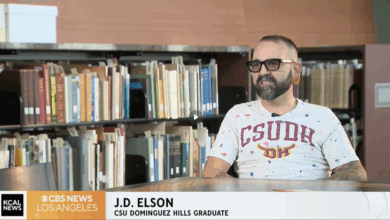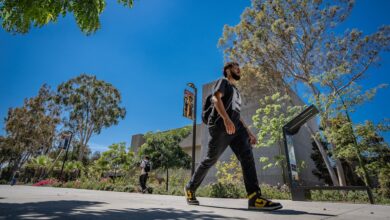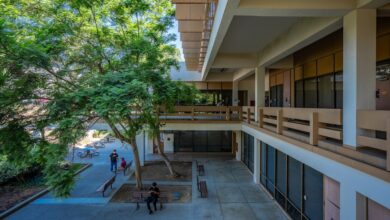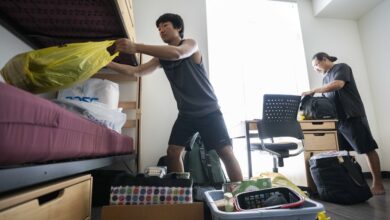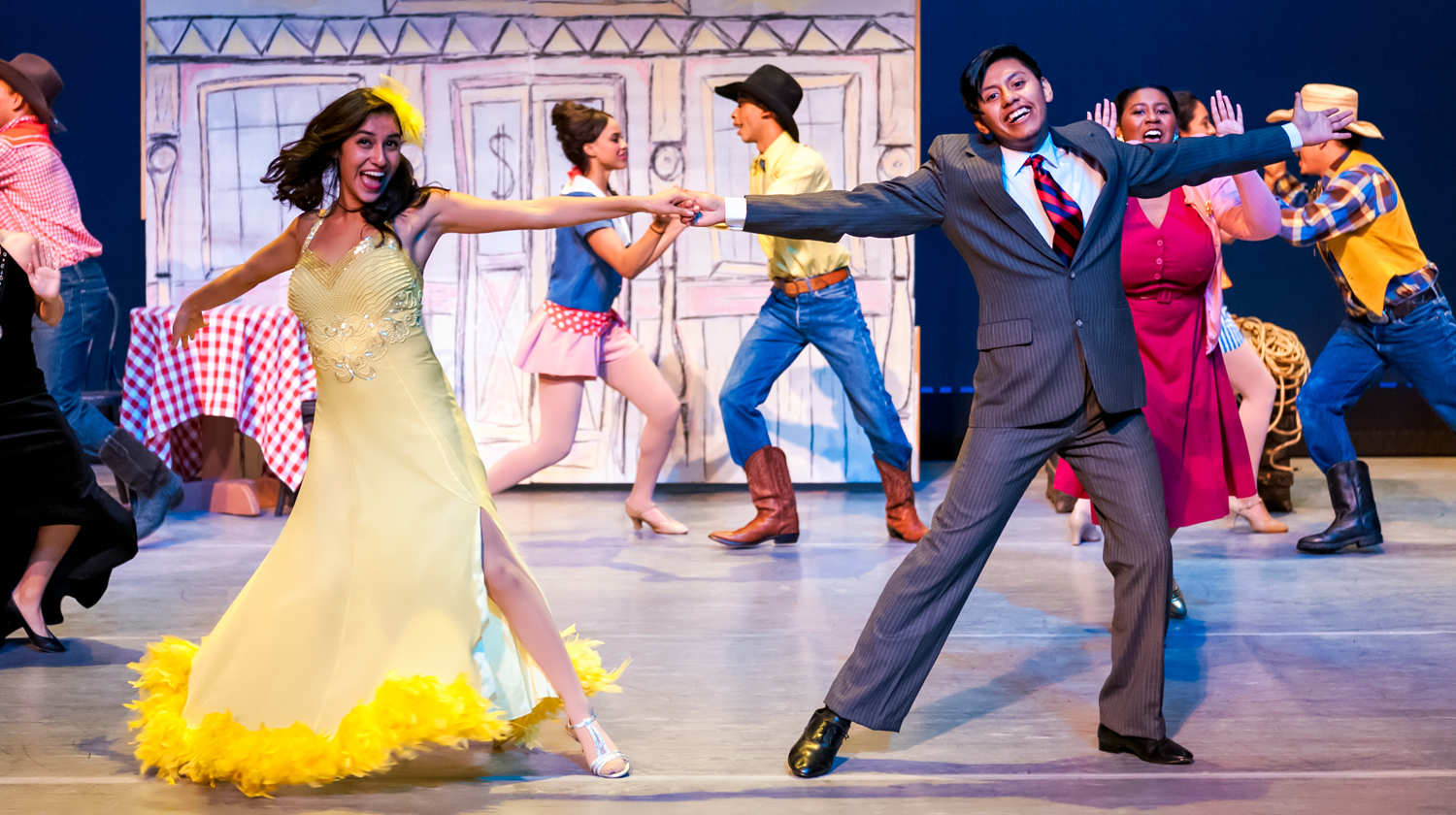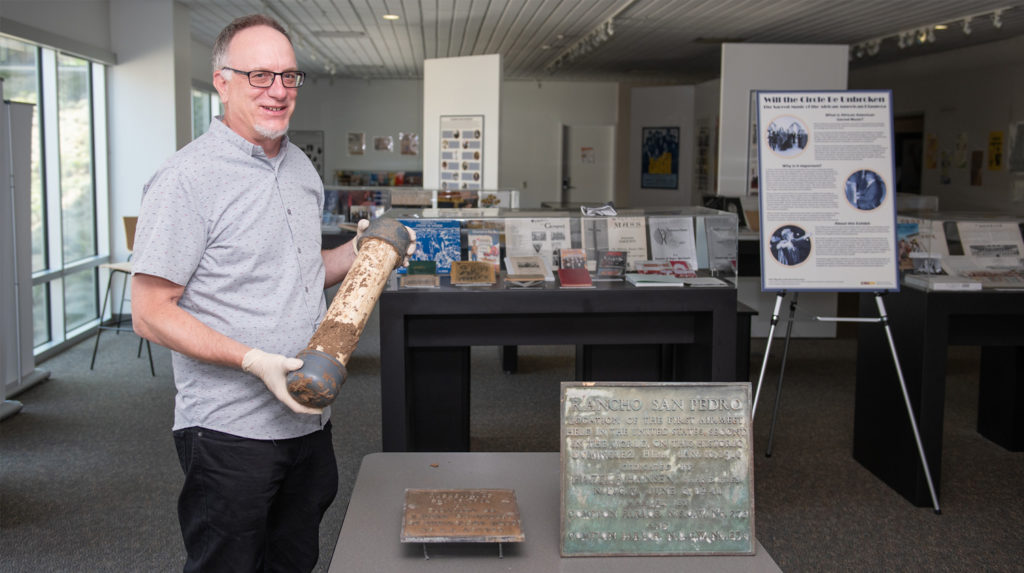
In recent years, only rumors remained about a time capsule buried in 1974 at what was then California State College at Dominguez Hills. The ceremony was part of a dedication and plaque installation to commemorate the 1910 Dominguez Air Meet that took place there, but no evidence of its burial remained until the capsule was recently found.
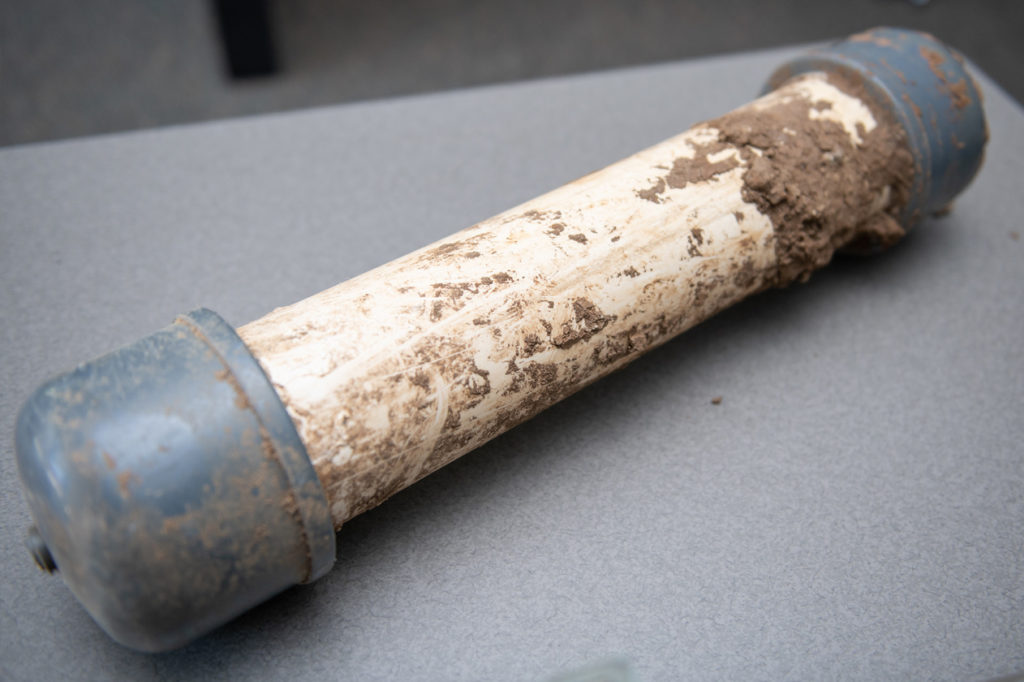
“The time capsule became somewhat of a mystery among staff since most of the folks who were at the ceremony are not around anymore,” says Gregory Williams, director of the Donald R. and Beverly J. Gerth Archives and Special Collections at California State University, Dominguez Hills (CSUDH).
The Native Daughters of the Golden West (NDGW) hosted the dedication in 1974 at the campus, and it was well attended by the university community. It featured the installation of a new NDGW plaque, and the original plaque that was installed within a mile of campus in 1941 by a Compton chapter of the organization. The original plaque was removed years later to make way for new construction in the city.
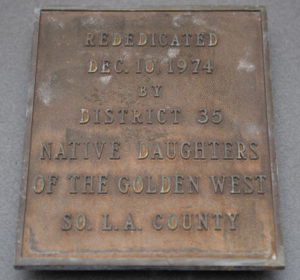
The 1910 Dominguez Air Meet featured pilots from as far away as France, and dazzled more than 176,000 curious spectators who traveled to the 10-day event from across the country and Canada by train, horse, and buggy – and a few in early automobiles. Many had never seen an airplane before, let alone aerial maneuvers or the breaking of air speed and altitude records (5,000 feet was achieved).
The NDGW is a fraternal organization founded in 1886 and headquartered in San Francisco that “preserves and marks the Golden State’s historical landmarks and sites.” The air meet fit the bill as the first of its kind in the United States.
A stout cement stand that supported the worn bronze plaques stood for 46 years at the entrance of campus off Victoria Street, but with construction of the Innovation and Instruction Building and renovation of the North Lawn encroaching on its space, crews removed the damaged marker in June.
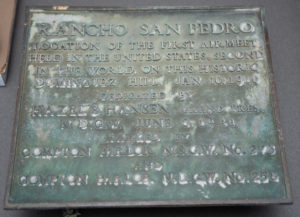
After the debris was cleared, the time capsule was visibly protruding from the dirt where the plaque marker stood. The short, metal-capped PVC pipe is still sealed and being stored in the archives. In the coming months, the university will discuss the next steps for the capsule, and potentially relocating the plaques.
“We will be having discussions about when and how to open the time capsule, and potential events that could be created around that,” Williams said. “It will be interesting to see what’s inside. No matter what they decide to preserve in a time capsule it will – in some way – reveal something about the collective mindset or culture of that era, and often reveal hope or curiosity of what the future might bring.”



